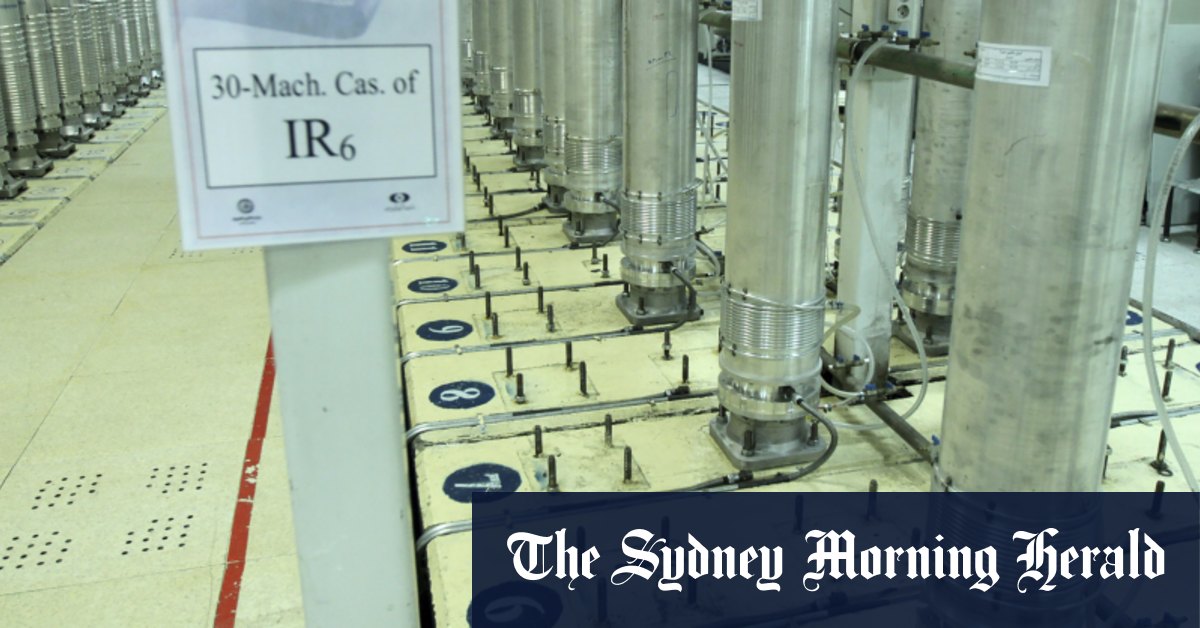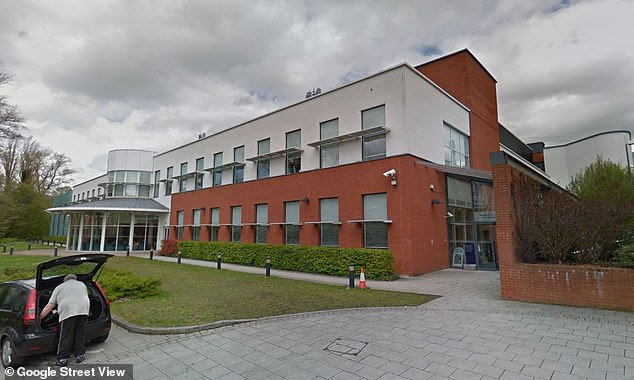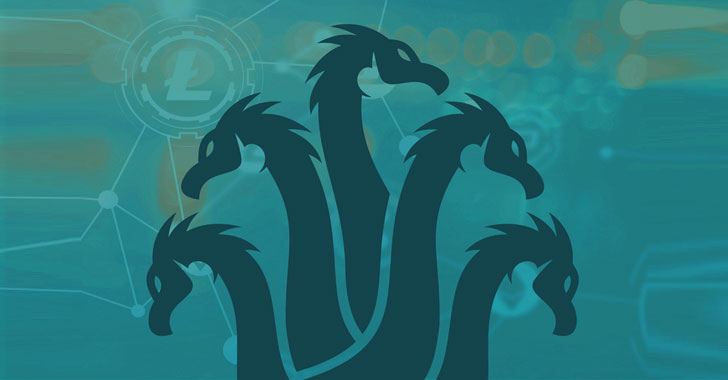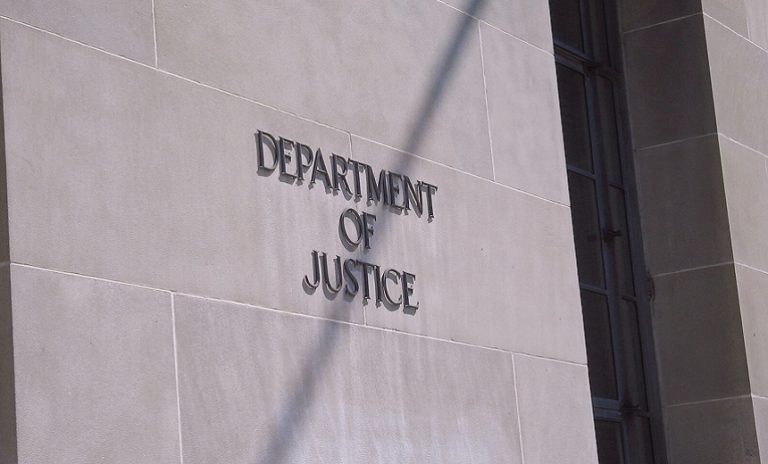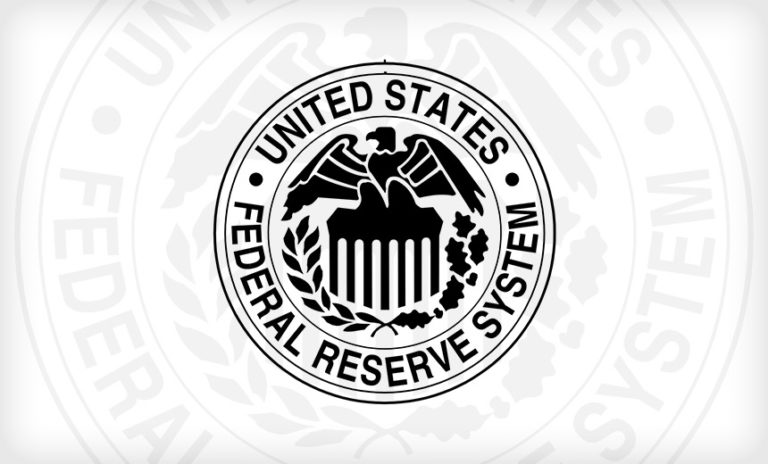Iran calls Natanz atomic site blackout ‘nuclear terrorism’, spies blame Israel
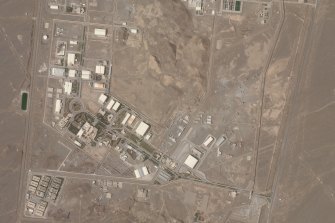
A satellite photo shows Iran’s Natanz nuclear facility earlier this week.Credit:Planet Labs via AP
Salehi’s comments to state TV did not explain what happened at the facility, but his words suggested a serious disruption.
“While condemning this desperate move, the Islamic Republic of Iran emphasises the need for a confrontation by the international bodies and the [International Atomic Energy Agency] against this nuclear terrorism,” Salehi said.
The IAEA, the United Nations’ body that monitors Tehran’s atomic program, earlier said it was aware of media reports about the incident at Natanz and had spoken with Iranian officials about it. The agency did not elaborate.
However, Natanz has been targeted by sabotage in the past. The Stuxnet computer virus, discovered in 2010 and widely believed to be a joint US-Israeli creation, once disrupted and destroyed Iranian centrifuges at Natanz amid an earlier period of Western fears about Tehran’s program.
Natanz suffered a mysterious explosion at its advanced centrifuge assembly plant in July that authorities later described as sabotage. Iran now is rebuilding that facility deep inside a nearby mountain. Iran also blamed Israel for the November killing of a scientist who began the country’s military nuclear program decades earlier.
Multiple Israeli media outlets reported on Sunday that an Israeli cyber attack caused the blackout in Natanz. Public broadcaster Kan said the Mossad was behind the attack. Channel 12 TV cited “experts” as estimating the attack shut down entire sections of the facility.
While the reports offered no sourcing for their information, Israeli media maintains a close relationship with the country’s military and intelligence agencies.
“It’s hard for me to believe it’s a coincidence,” Yoel Guzansky, a senior fellow at Tel Aviv’s Institute for National Security Studies, said of the blackout. “If it’s not a coincidence, and that’s a big if, someone is trying to send a message that ‘we can limit Iran’s advance and we have red lines.’”
It also sends a message that Iran’s most sensitive nuclear site is “penetrable,” he added.
Netanyahu later on Sunday night, Tel Aviv time, toasted his security chiefs, with the head of the Mossad, Yossi Cohen, at his side on the eve of his country’s Independence Day.
“It is very difficult to explain what we have accomplished,” Netanyahu said of Israel’s history, saying the country had been transformed from a position of weakness into a “world power”.
Israel typically doesn’t discuss operations carried out by its Mossad intelligence agency or specialised military units. In recent weeks, Netanyahu repeatedly has described Iran as the major threat to his country as he struggles to hold onto power after multiple elections and while facing corruption charges.
Loading
Speaking at the event Sunday night, Netanyahu urged his security chiefs to “continue in this direction, and to continue to keep the sword of David in your hands,” using an expression referring to Jewish strength.
Meeting with Austin on Sunday, Israeli Defence Minister Benny Gantz said Israel viewed America as an ally against all threats, including Iran.
“The Tehran of today poses a strategic threat to international security, to the entire Middle East and to the state of Israel,” Gantz said. “And we will work closely with our American allies to ensure that any new agreement with Iran will secure the vital interests of the world, of the United States, prevent a dangerous arms race in our region, and protect the state of Israel.”
The Israeli army’s chief of staff, Lieutenant General Aviv Kochavi, also appeared to reference Iran.
The Israeli military’s “operations in the Middle East are not hidden from the eyes of the enemy,” Kochavi said. “They are watching us, seeing (our) abilities and weighing their steps with caution.”
On Saturday, Iran announced it had launched a chain of 164 IR-6 centrifuges at the plant. Officials also began testing the IR-9 centrifuge, which they say will enrich uranium 50 times faster than Iran’s first-generation centrifuges, the IR-1. The nuclear deal limited Iran to using only IR-1s for enrichment.
Loading
Since then-president Donald Trump’s withdrawal from the Iran nuclear deal in 2018, Tehran has abandoned all the limits of its uranium stockpile. It now enriches up to 20 per cent purity, a technical step away from weapons-grade levels of 90 per cent. Iran maintains its atomic program is for peaceful purposes.
The nuclear deal had granted Tehran sanctions relief in exchange for ensuring its stockpile never swelled to the point of allowing Iran to obtain an atomic bomb if it chose.
On Tuesday, an Iranian cargo ship said to serve as a floating base for Iran’s paramilitary Revolutionary Guard forces off the coast of Yemen was struck by an explosion, likely from a limpet mine. Iran has blamed Israel for the blast. That attack escalated a long-running shadow war in Middle East waterways targeting shipping in the region.
AP
Most Viewed in World
Loading

